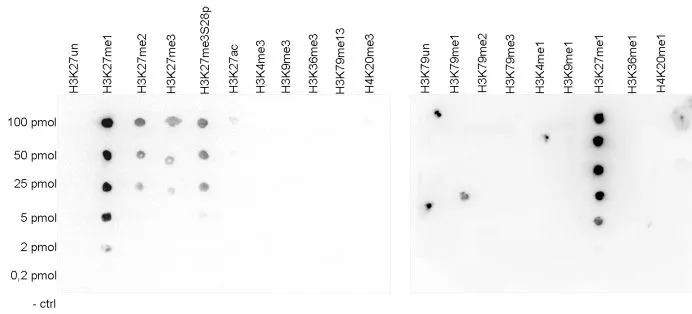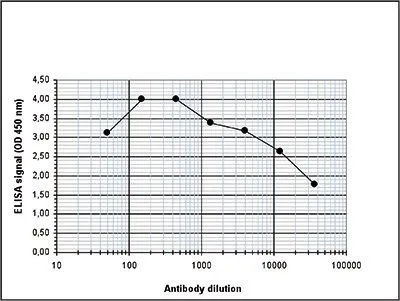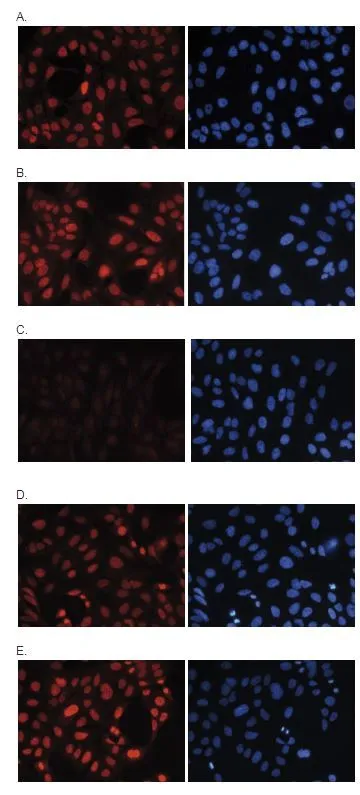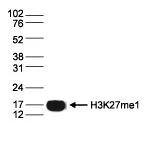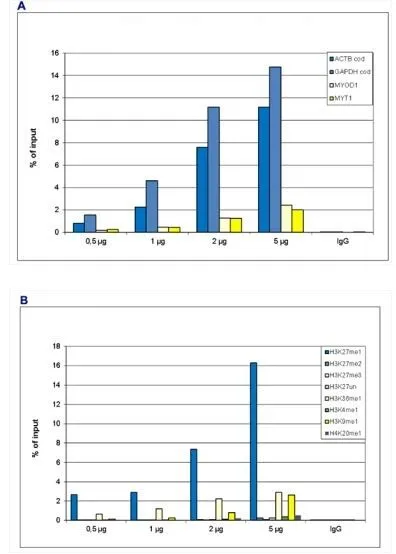
ChIP analysis of sheared chromatin from 5x10? K562 cells using GTX60350 Histone H3K27me1 (Mono-methyl Lys27) antibody - ChIP grade. A titration of the antibody consisting of 0.5, 1, 2 and 5 microg per ChIP experiment was analysed. IgG (2 microg/IP) was used as negative IP control. Figure 1A. Quantitative PCR was performed with primers for the coding sequence of the active GAPDH and ACTB genes, used as positive controls, and for the inactive MYOD1 and MYT1 genes, used as negative controls. The graph shows the recovery, expressed as a % of input (the relative amount of immunoprecipitated DNA compared to input DNA after qPCR analysis). Figure 1B. Recovery of the nucleosomes carrying the H3K27me1, H3K27me2, H3K27me3, H3K4me1, H3K9me1, H3K36me1, H4K20me1 and the unmodified H3K4 as determined by qPCR. The figure clearly shows the antibody is specific in ChIP for the H3K27me1 modification with some slight cross reaction with H3K36me1 and H3K9me1 at higher concentrations.
Histone H3K27me1 (Mono-methyl Lys27) antibody - ChIP grade
GTX60350
ApplicationsDot Blot, ImmunoFluorescence, Western Blot, ChIP Chromatin ImmunoPrecipitation, ELISA, ImmunoCytoChemistry
Product group Antibodies
ReactivityHuman, Plant
TargetH3C1
Overview
- SupplierGeneTex
- Product NameHistone H3K27me1 (Mono-methyl Lys27) antibody - ChIP grade
- Delivery Days Customer9
- ApplicationsDot Blot, ImmunoFluorescence, Western Blot, ChIP Chromatin ImmunoPrecipitation, ELISA, ImmunoCytoChemistry
- CertificationResearch Use Only
- ClonalityPolyclonal
- Concentration1.93 mg/ml
- ConjugateUnconjugated
- Gene ID8350
- Target nameH3C1
- Target descriptionH3 clustered histone 1
- Target synonymsH3 histone family, member A; H3/A; H3C10; H3C11; H3C12; H3C2; H3C3; H3C4; H3C6; H3C7; H3C8; H3FA; HIST1H3A; histone 1, H3a; histone cluster 1 H3 family member a; histone cluster 1, H3a; histone H3.1; histone H3/a
- HostRabbit
- IsotypeIgG
- ReactivityHuman, Plant
- Storage Instruction-20°C or -80°C,2°C to 8°C
- UNSPSC12352203

